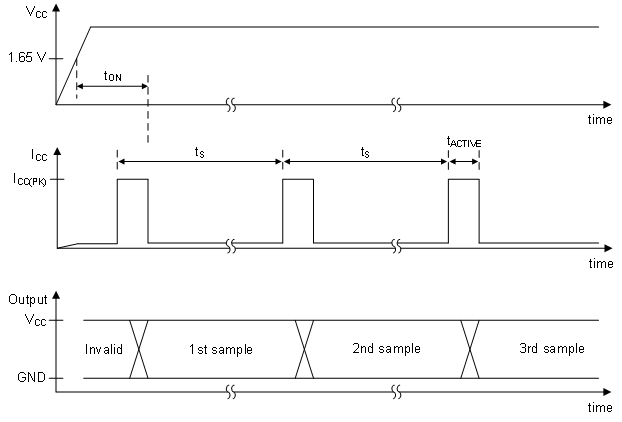SLVSDC7F April 2017 – February 2022 DRV5032
PRODUCTION DATA
- 1 Features
- 2 Applications
- 3 Description
- 4 Revision History
- 5 Device Comparison
- 6 Pin Configuration and Functions
- 7 Specifications
- 8 Detailed Description
- 9 Application and Implementation
- 10Power Supply Recommendations
- 11Layout
- 12Device and Documentation Support
- 13Mechanical, Packaging, and Orderable Information
8.3.2.4 Sampling Rate
When the DRV5032 device powers up, it measures the first magnetic sample and sets the output within the tON time. The output is latched, and the device enters an ultra-low-power sleep state. After each tS time, the device measures a new sample and updates the output, if necessary. If the magnetic field does not change between periods, the output does not change.
 Figure 8-7 Timing Diagram
Figure 8-7 Timing Diagram